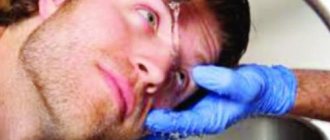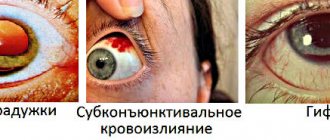Hepatitis C is an infectious disease characterized by inflammation of the liver. Caused by the RNA virus HCV, which is transmitted primarily through instrumental and parenteral routes. If, with hepatitis C, blood comes into contact with damaged mucous membranes or skin, the risk of infection will be 3-10%. The probability of infection depends on the viral load, that is, the concentration of virions in the biomaterial.
How much blood is needed for infection?
Hepatitis C is a viral liver disease, the causative agent of which is transmitted primarily through blood contact with the blood of a carrier. People living with sick people must follow measures to prevent infection. During hygiene procedures, blood can get on scissors, tweezers, razors, washcloths, etc. The hepatitis C virus (HCV) remains viable in the external environment for 16-96 hours at a temperature of 20-25 °C.
The risk of contracting hepatitis when using common hygiene products is 3-10%. The infectious dose of biomaterial depends on:
- viral load on the body;
- immune status of a healthy person;
- method of infection.
1 ml of patient’s blood contains from 100 to 1000 infectious doses. But even if the hepatitis virus enters the body of a healthy person, infection does not always occur.
When the immune system is functioning normally, the penetration of HCV into the body does not threaten infection. Self-healing occurs in 15-30% of cases, as indicated by antibodies to HCV in the absence of viral RNA.
Bleeding in the eye: what is it?
Eye bleeding or subconjunctival hemorrhage means that the eye is filled with blood, mainly in the front of the eyeball.
The external manifestations are: redness of the eye, blood accumulates in the front part between the colored iris and the transparent cornea.
Why is the eye filled with blood? A common cause is damage to a blood vessel after a blow or something sharp entering the eye.
What to do if the blood of a patient with hepatitis C gets on the skin or mucous membranes
There is no likelihood of transmission of the hepatitis pathogen when blood comes into contact with the skin without damage. But if there are abrasions, ulcerations or burns on the body, the risk of infection is high. In such a situation it is necessary:
- squeeze the blood out of the wound within a few seconds;
- wash the damaged area with soapy water;
- treat the skin with 70% alcohol;
- cauterize the wound with an alcohol solution of iodine.
If the blood of a patient with hepatitis gets into the eye, the mucous membrane is washed with running water for several minutes. For disinfection, 2-3 drops of a 1% boric acid solution are instilled into both eyes. If necessary, the nasal mucosa is treated with Protargol, and the mouth is rinsed with a 0.05% solution of potassium permanganate.
To make sure there is no infection, take a viral RNA test 10-12 days after contact with infected biomaterial. After 1, 3, 6 and 12 months, perform a serological test (ELISA). The absence of antibodies to HCV in the body indicates that you have not received the causative agent of hepatitis.
Algorithm of actions of a medical worker in case of cuts and injections
Option 1: Emergency prevention of parenteral viral hepatitis and HIV infection (Appendix 12 to SanPiN 2.1.3.2630-10)
To avoid infection with parenteral viral hepatitis and HIV infection, you should follow the rules for working with piercing and cutting instruments. In case of cuts and injections, immediately treat and remove gloves, squeeze out blood from the wound, wash your hands with soap and running water, treat your hands with 70% alcohol, lubricate the wound with a 5% iodine solution. If blood or other biological fluids come into contact with the skin, the area is treated with 70% alcohol, washed with soap and water and re-treated with 70% alcohol. If blood gets on the mucous membranes of the eyes, they are immediately washed with water or a 1% solution of boric acid; in case of contact with the nasal mucosa, treat with a 1% solution of protargol; on the oral mucosa - rinse with a 70% alcohol solution or a 0.05% solution of potassium permanganate or a 1% solution of boric acid. The mucous membranes of the nose, lips, and conjunctiva are also treated with a solution of potassium permanganate at a dilution of 1:10,000 (the solution is prepared ex tempore). For the purpose of emergency prevention of HIV infection, azidothymidine is prescribed for 1 month. The combination of azidothymidine (Retrovir) and lamivudine (Elivir) enhances antiretroviral activity and overcomes the formation of resistant strains. If there is a high risk of contracting HIV infection (deep cut, visible blood on damaged skin and mucous membranes from patients infected with HIV), you should contact the territorial AIDS Control and Prevention Centers to prescribe chemoprophylaxis. Persons exposed to the threat of HIV infection are under the supervision of an infectious disease specialist for 1 year with mandatory examination for the presence of a marker of HIV infection. Personnel who have had contact with material infected with the hepatitis B virus are simultaneously administered specific immunoglobulin (no later than 48 hours) and a vaccine against hepatitis B in different parts of the body according to the scheme 0 - 1 - 2 - 6 months. with subsequent monitoring of hepatitis markers (not earlier than 3 - 4 months after the administration of immunoglobulin). If the exposure occurred in a previously vaccinated health care worker, it is advisable to determine the level of anti-HBs in the blood serum. If there is an antibody concentration in the titer of 10 IU/l or higher, vaccine prophylaxis is not carried out; in the absence of antibodies, it is advisable to simultaneously administer 1 dose of immunoglobulin and a booster dose of the vaccine.
Option 2: Actions of a medical worker in an emergency (Resolution of the Chief State Sanitary Doctor of the Russian Federation dated January 11, 2011 No. 1 “On approval of SP 3.1.5.2826-10 “Prevention of HIV infection”).
- in case of cuts and injections, immediately remove gloves, wash your hands with soap and running water, treat your hands with 70% alcohol, lubricate the wound with a 5% alcohol solution of iodine; - if blood or other biological fluids come into contact with the skin, the area is treated with 70% alcohol, washed with soap and water and re-treated with 70% alcohol; - if the patient’s blood and other biological fluids come into contact with the mucous membranes of the eyes, nose and mouth: rinse the oral cavity with plenty of water and rinse with a 70% solution of ethyl alcohol, the mucous membrane of the nose and eyes is washed generously with water (do not rub); — if the patient’s blood or other biological fluids get on the gown or clothing: remove the work clothes and immerse them in a disinfectant solution or in a tank for autoclaving; — start taking antiretroviral drugs as soon as possible for post-exposure prophylaxis of HIV infection.
It is necessary, as soon as possible after contact, to test for HIV and viral hepatitis B and C the person who may be a potential source of infection, and the person in contact with him. HIV testing of a potential source of HIV infection and a contact person is carried out using rapid testing for HIV antibodies after an emergency with the obligatory sending of a sample from the same portion of blood for standard HIV testing in an ELISA. Samples of plasma (or serum) from the blood of a person who is a potential source of infection and a contact person are transferred for storage for 12 months to the AIDS center of a constituent entity of the Russian Federation. The victim and the person who may be a potential source of infection must be interviewed about the carriage of viral hepatitis, STIs, inflammatory diseases of the genitourinary tract, and other diseases, and counseled regarding less risky behavior. If the source is infected with HIV, determine whether he or she has received antiretroviral therapy. If the victim is a woman, a pregnancy test should be performed to determine if she is breastfeeding. In the absence of clarifying data, post-exposure prophylaxis begins immediately; if additional information becomes available, the regimen is adjusted.
Carrying out post-exposure prophylaxis for HIV infection with antiretroviral drugs: Antiretroviral drugs should be started within the first two hours after the accident, but no later than 72 hours. The standard regimen for post-exposure prophylaxis of HIV infection is lopinavir/ritonavir + zidovudine/lamivudine. In the absence of these drugs, any other antiretroviral drugs can be used to initiate chemoprophylaxis; If it is not possible to immediately prescribe a full-fledged HAART regimen, one or two available drugs are started. The use of nevirapine and abacavir is possible only in the absence of other drugs. If the only available drug is nevirapine, only one dose of the drug should be prescribed - 0.2 g (repeated administration is unacceptable), then when other drugs are received, full-fledged chemoprophylaxis is prescribed. If chemoprophylaxis is started with abacavir, testing for hypersensitivity reactions to it should be carried out as soon as possible or abacavir should be replaced with another NRTI.
Registration of an emergency situation is carried out in accordance with established requirements: - LPO employees must immediately report each emergency to the head of the unit, his deputy or a senior manager; — injuries received by health workers must be taken into account in each health care facility and registered as an industrial accident with the drawing up of an Industrial Accident Report; — you should fill out the Occupational Accident Register; — it is necessary to conduct an epidemiological investigation of the cause of the injury and establish a connection between the cause of the injury and the performance of official duties by the health worker.
All healthcare facilities should be provided with, or have access to, rapid HIV tests and antiretroviral drugs as needed. A stock of antiretroviral drugs should be stored in any health care facility at the discretion of the health authorities of the constituent entities of the Russian Federation, but in such a way that examination and treatment can be organized within 2 hours after an emergency. The authorized health care facility must identify a specialist responsible for the storage of antiretroviral drugs, a storage location with access, including at night and on weekends.
Sequence of processing of dental instruments Used dental instruments and materials are disinfected after each patient. If tools and materials are disposable, they must be disposed of safely. Before cotton swabs, plastic saliva ejectors, etc. are sent to the city landfill, they should be disinfected by immersing them for one hour in a 1% chloramine solution, or a 6% hydrogen peroxide solution, or a 3% bleach solution, or for 30 minutes in a solution of incrasept. After each patient, the tips of drills, waste pads, air and water pistols, and ultrasonic devices for removing dental plaque are treated twice with 70° alcohol and at the end of the shift they are treated with 3% chloramine for 60 minutes or incrasept solution for 30 minutes. Instruments that have come into contact with the patient's mucous membrane and are contaminated with biological fluids (dental hand instruments, glasses, mirrors, burs) and gloves are disinfected immediately after use, then undergo pre-sterilization treatment and sterilization. Disinfection is carried out by completely immersing used instruments for 30 minutes in a container with incrasept solution (3% chloramine for 60 minutes or 6% hydrogen peroxide solution for 60 minutes, or 2% Virkons solution for 10 minutes, or a solution of sidex for 15 minutes, or 0.1% chlorsept solution for 60 minutes). The disinfectant solution is used six times, after which it is changed. Next, the instruments undergo pre-sterilization treatment: the instruments are immersed in another container with an incrasept solution at t = 20-45°, where each instrument is washed with a brush for 15 s; wash the instruments with running water; rinse with distilled water; check the quality of purification: from blood - with an azapyran test (if the test is positive, repeat the entire pre-sterilization treatment); from alkali - phenolphthalein test (if the test is positive, repeat steps 2 and 3); instruments are wiped with dry towels or dried with hot air until the moisture disappears. Products made of glass, metals, and silicone rubber are sterilized without packaging (in open containers) or in paper packaging using the dry-heat method (dry hot air). Sterilization mode: 60 min at t=180°. Polishers, working parts of dental plaque removal devices and burs are treated in the same way as instruments. Dental mirrors are disinfected, then pre-sterilized (points 2, 3 and 4), after which they are sterilized with glass beads at high temperature: stored in Petri dishes. Rubber gloves, cotton swabs, products made of polymers, textiles, latex are sterilized in containers by autoclaving in two modes: at t = 120°, pressure 1 atm. for 45 minutes or at t = 132°, pressure 2 atm. within 30 min. The shelf life of the sterility of instruments in sealed packaging (in a bag, in a kraft paper bag) is three days; after opening the bag, the material in it is considered sterile during the working day. Features of organizing the reception of patients with an increased risk of infection.
How to treat wounds of an infected person
During emergency care for a person with hepatitis C, it is necessary to prevent contact of your blood with the patient’s blood. It should not come into contact with exposed skin or mucous membranes. To protect yourself, you should:
- use rubber gloves;
- apply disinfectant solutions or ointments with cotton swabs;
- dispose of bloody bandages and cotton wool.
If contaminated biomaterial gets on the skin or mucous membranes, use strong antiseptics.
How to wash soiled items
In cases where the blood of a hepatitis patient gets on things, furniture, floors and other household items, disinfection is carried out. To destroy the virus, detergents containing chlorine additives are used. No less effective:
- Sanox;
- Santry gel;
- Sanfor;
- Domestos.
If clothes are dirty, wash them using rubber gloves in water at a temperature of 60°C. But it is best to boil it for at least 5-7 minutes. White items are soaked for 30 minutes in a chlorine solution.
Hepatologists recommend washing clothes of people with hepatitis separately from things of healthy household members. This will reduce the risk of contracting HCV infection to a minimum.
Hyphema
The anterior chamber of the eye is the area between the cornea (the clear convex lens of the eye" and the iris (the disk with the pupil in the center that gives the eye its unique color) with the lens (the clear lens behind the pupil). The normal condition is when this area is filled with a clear liquid. The appearance of blood leads to to hyphema or hemorrhage in the anterior chamber of the eye.
The reasons for the appearance of this condition of the organ of vision can be different, even sometimes unrelated to each other. Conventionally, experts divide the reasons into three groups:
1. Trauma is a common cause.
- Penetrating trauma - damage to the eye with a sharp object, less often from the action of a blunt object. The internal contents of the eyeball and the environment are damaged.
- Non-penetrating injury - the integrity of the internal structure of the eye is destroyed. This leads to hemorrhage of the eye into the anterior chamber. Most often the cause is the result of impact with a blunt object.
- All types of surgery on the organs of vision are accompanied by hyphema.
2. Diseases of the eyeball are usually accompanied by the formation of new defective vessels inside the eye. These vessels have defects in their structure, so the risk of their fragility increases. Usually this condition is a consequence of the following reasons:
- diabetes;
- retinal vein blockage;
- retinal detachment;
- intraocular tumors;
- inflammatory diseases of the internal structures of the eye.
3. Diseases of the body in particular:
- for chronic alcohol and drug intoxication;
- in case of blood clotting disorders;
- for oncological diseases;
- for systemic connective tissue diseases.
Hyphema can be divided into four stages of damage:
- 1st degree: visually the anterior chamber of the eye is one third;
- 2nd degree: blood fills the anterior chamber of the eye to half;
- 3rd degree: the chamber of the eye is filled with blood more than half;
- 4th degree: completely filled with blood, “black eye” condition.
This classification is more than conditional.
The degree of hyphema damage is determined by symptoms:
- visual determination of blood fullness of the anterior chamber of the eye;
- visual acuity decreases (especially in a lying position);
- fear of bright light;
- painful sensations.
Diagnosis of the disease consists of a visual examination, tonometry (measuring intraocular pressure), visometry (establishing visual acuity), biomicroscopy (an instrumental method using a special microscope).










